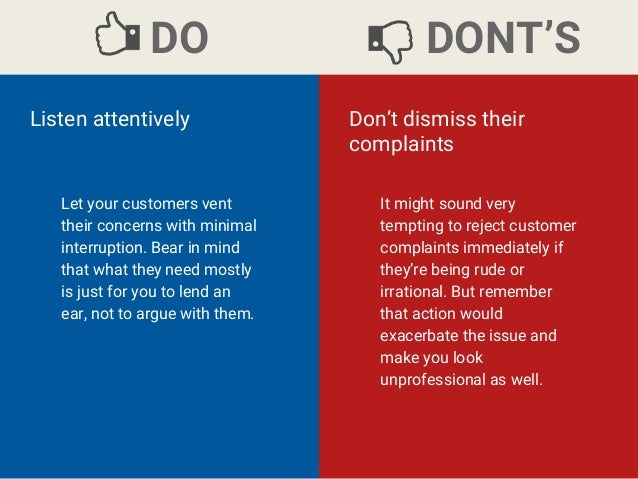Customer reviews affect how customers interpret you and your goods, how much they trust you, and whether or not you will be their favorite eCommerce store. On the other hand, losing feedback will send potential shoppers to other websites quickly and bust your marketing budget. So, you need to create feedback for your eCommerce site if you want to sell more. We’ve compiled a list of five basic considerations to help you get started and improve the effectiveness of your reviews.

- Make it easy for the goods to be checked
Let’s begin with a mental change. Since they support your company, you want it to be as simple as possible for people to leave feedback. When reviews are positive and recent, studies show that they make your company look more trustworthy and inspire customers to buy from you. If your goods have five reviews on the page, compared to a product with zero reviews, there is a 270 percent greater likelihood that anyone will purchase them.
When you inquire, customers can leave feedback, however a complicated mechanism will stop them. It isn’t worth their time if the specifications and demands are unreasonable.
It’s the same if you place the onus on the customer to show they’re a legitimate buyer. Adding to their work (particularly when you could do this for the client instead) makes them less likely to complete a review process.
So, in your operations, eCommerce firms can look at policies and procedures that will help you find real customers to leave feedback.
This means ensuring that you obtain sales details and email addresses, enabling you to reach out to individuals about the particular items they have purchased. Instead of asking people to fill out multi-question surveys, simplify rankings or reporting criteria.
The mindset for approaching reviews, especially when you want to increase their number and enhance their quality, is to ask: What challenges do my clients have and how can I eliminate them in a way that makes it easier and more pleasant to leave a review?
2. Search for platform-specific tools
Look at your existing eCommerce website and email marketing services now that you are thinking about the benefits of feedback and have a desire to simplify them. To make the whole process simpler, get a list of the platforms and software you use. That list is where you can begin your quest for plugins and other resources for “analysis” and “rating.”
Starting with pre-made products that have an established track record of easy integration will speed up the process of adding features. You may find instruments that introduce feedback in ways that instinctively fit into the journey of a consumer in certain instances.
Customers who use email marketing platforms will be able to click a star rating and be taken to a landing page with options for more details, with the star they clicked already highlighted.
To make it easier to integrate all and have reviews populate your sales, product, and other sites, use “review” tools based on your eCommerce site. If you’re a one-person shop or don’t know where to start, most platforms, such as Shopify, have built-in product review apps. That’s not to say they’re always the best choice for everyone, but to get started, they seem to be quick.
Check your other tools and collaborators when you’re thinking about integration. For example, for companies that outsource eCommerce fulfillment, ensure that partners add shipping confirmation to order management software automatically. These measures will assist you in delivering the best possible customer service to your clients.

3. Encourage people to write reviews.
If the past year has taught us something, it’s that there are many things that we promise ourselves we’ll complete “when we have the time,” but never do when we have none. That means for some of your audience, including those who enjoy your goods, the time to write a review will never arrive.
Encourage them by rewarding all feedback, not just the ones that are overly optimistic. One fast way to get more people to comment and post is to offer rewards. So that readers believe them, you want truthful feedback. It can erode whatever confidence you’ve built with your audience if it appears that you paid for fake reviews.
Split your contact lists if you’re worried about a flood of them from the same date. Request that some people post on your website, while others rate you on Google or Facebook. To get individuals to express their opinions, suggest running a user-generated content (UGC) campaign on a social platform. To avoid being flagged by an eCommerce website, spread elements out to reach a wider audience.
Inviting people to study, comment, share, and build is a good idea. It will show what they like and dislike about your products, as well as how they use them and where you may need to add something different. Plus, if the reward is a discount, it allows them to buy right after they’ve spent time thinking positively.
4. Showcase reviews from a range of sites across several pages.
Increasing the effectiveness of the feedback and comments you can produce is a part of improving reviews. Throughout your website and general sales process, you may want to completely exploit these products and use them as selling points. You get a wide range of content to use by incentivizing ratings across different channels.
Remember the buyer’s journey. They can go to a product or category page by clicking on an ad. These are stellar choices for favorable feedback of the particular product and you’ll want to support consumers as many of these pages as possible.
They add them to a sales cart from there and go to a page to check the cart and begin providing information. This is where your shipping choices are most likely to be found.
Why not add summary snapshots that talk about how fast and successful your shipping was? Show them how happy customers are by making goods and items arrive early. If your UGC campaign has contributed to content unboxing, embed a video to enable individuals to pay for faster shipping or add more to their order to meet a threshold for fast/free shipping.
Showcase feedback for your business in general and make your own post or video thanking customers for their kind words after checkout, when you take your audience to a confirmation page. Turn this page into a celebration of your ability to make customers happy.
You can use feedback again when you submit an email update with order or shipping information. Offer people the best way to contact your customer service, and include a rundown of how happy they were when you solved their problem.
It’s all about inspiring individuals to think about the goods, operation, and organization positively. You may also get a few customers who want to write their own reviews so that their names and words appear on your next email or confirmation page.
5. Respond publicly and privately to complaints
Admitting challenges and trying to fix them is a central tenet of enhancing customer reviews. You won’t be able to make everyone happy, but you should make amends. So, get your team to track your site and other locations proactively for adverse feedback and complaints. They need to be discussed publicly and in private networks of support when you encounter them.
Publicly answering components gives other readers a way of knowing that you take concerns seriously. This eliminates problems from only having negative feedback without rebuttal, which would make guests believe certain negative things. A public answer should recognize the issue, outline a general approach, and then notify the reviewer.
It’s easy to want these reactions to be formulaic. However, when anyone may see several reports about different problems, they become less legitimate, while all company answers are the same. You may allow responses to follow a pattern, but they shouldn’t all contain the same text.
Take this seriously when you turn someone to a private channel to solve their dilemma. If at all necessary, work tirelessly to solve the problem. Ask the client to amend their analysis with that information if you are able to answer it adequately. You don’t want to convince people to alter the whole analysis, but you might ask them to add to it so that others know you found a solution.
If the customer does not respond, you may want to consider updating your review instead. Keep it plain, such as saying: We’re glad we’ve been able to fix that. Please don’t hesitate to reach out if you have any more questions. Oh, thank you!
One of the most powerful ways to transform negative problems into positive ones for potential readers is to empathize with the client, solve the problem, and then circle around.

Often return to the “why”
There’s a key explanation why you’ve come across this article and are curious about your reviews in eCommerce. You may need something to help persuade shoppers, or you’re just getting started, or you want to bury some negative or outdated feedback. Reviews can help in many ways, and one change or another is better for some of the strategies mentioned.
You need to ask smart questions about why you are trying to increase and boost ratings to get started with the right strategies and tools. See if the ideas that you consider are important to the audience that you want to target. Ask if you’re discussing the problems they’re having or if you’re giving them something that makes writing a review more appealing.
It would be easier for you to get the kinds of feedback you want and that your customers find useful if you focus on the “why” behind reviews. Throughout the process, you’ll be thinking about what’s most critical and significant, simplifying it and accelerating the gains you see.
As a reputed Software Solutions Developer we have expertise in providing dedicated remote and outsourced technical resources for software services at very nominal cost. Besides experts in full stacks We also build web solutions, mobile apps and work on system integration, performance enhancement, cloud migrations and big data analytics. Don’t hesitate to get in touch with us!




